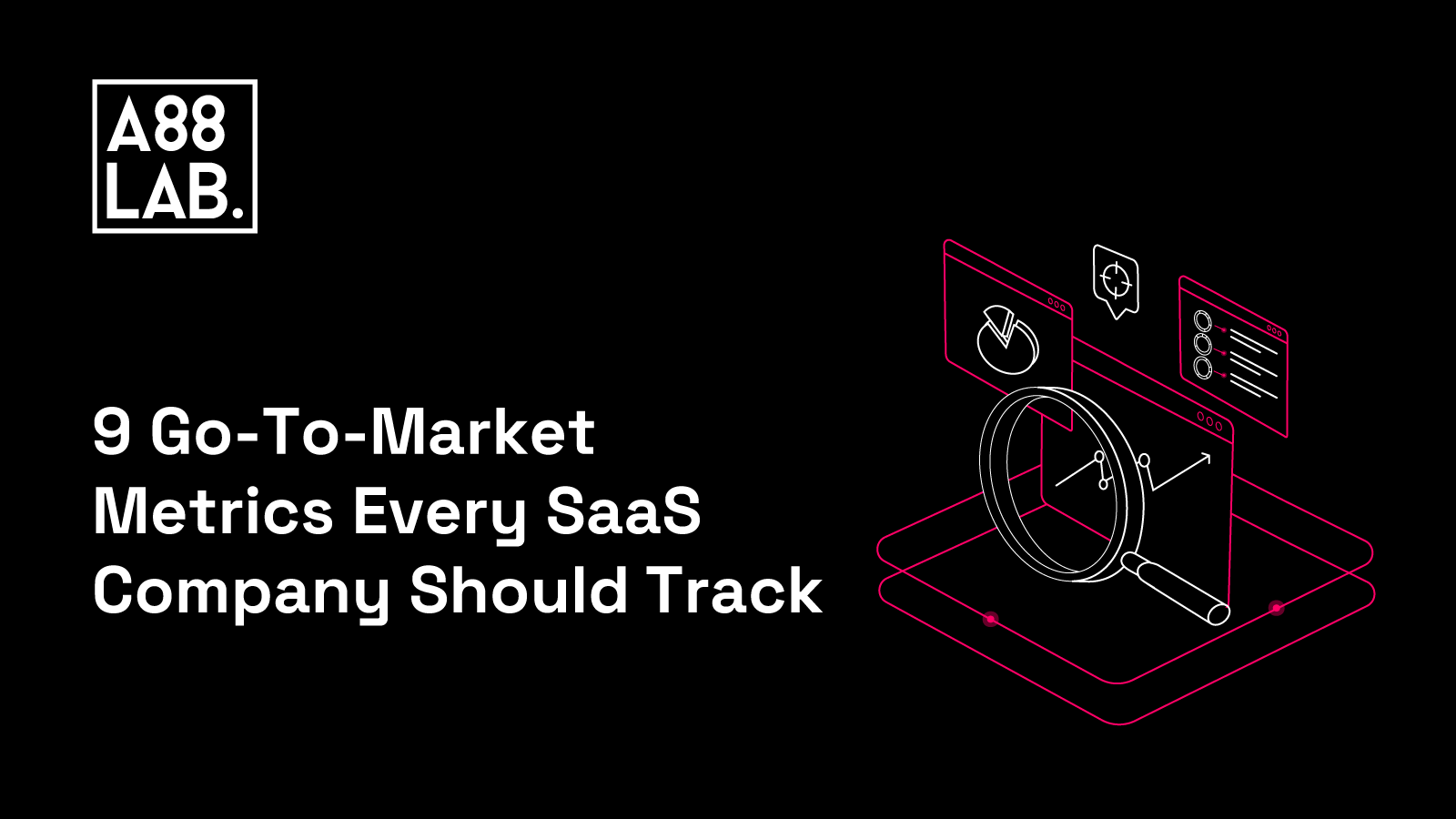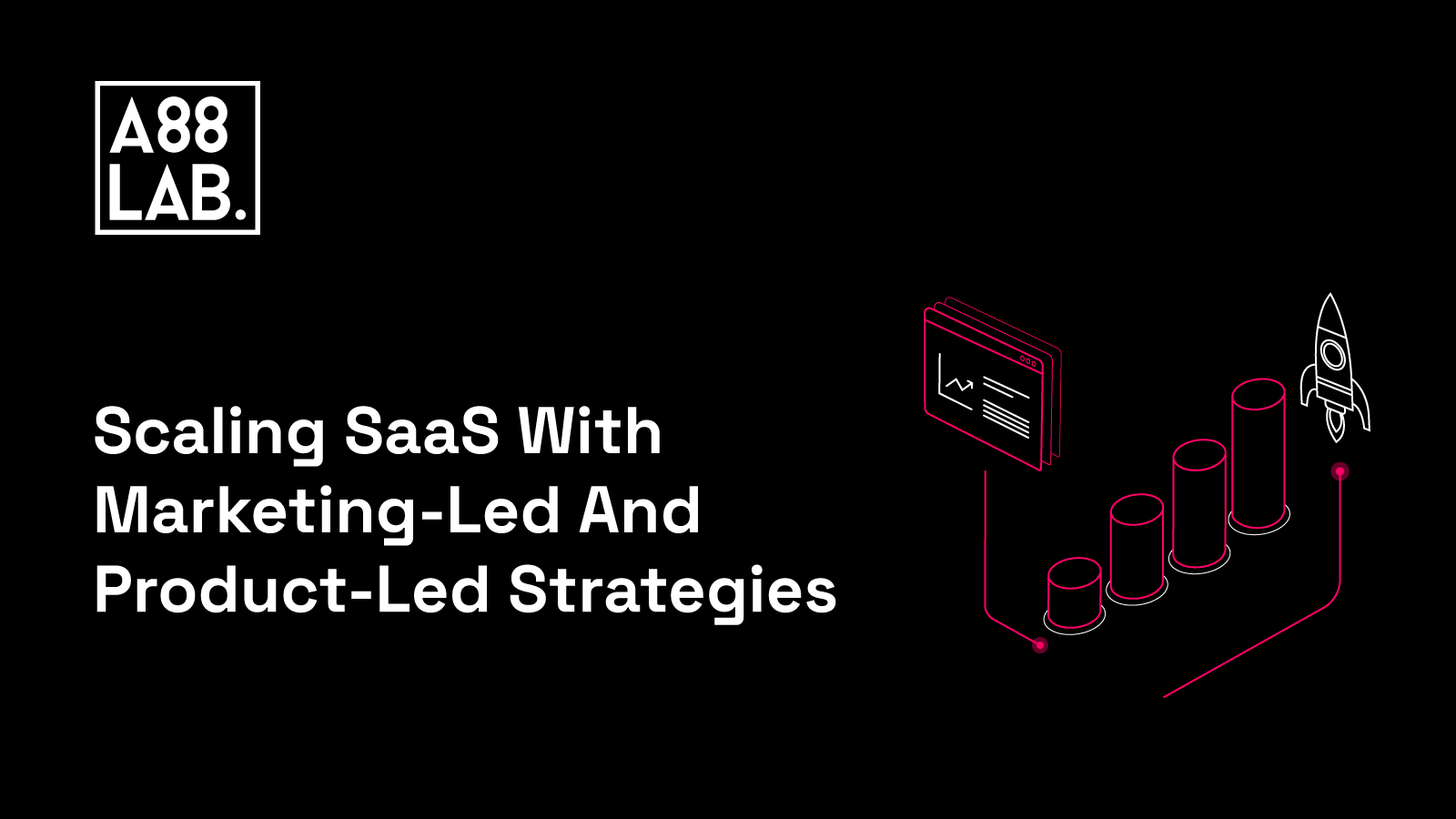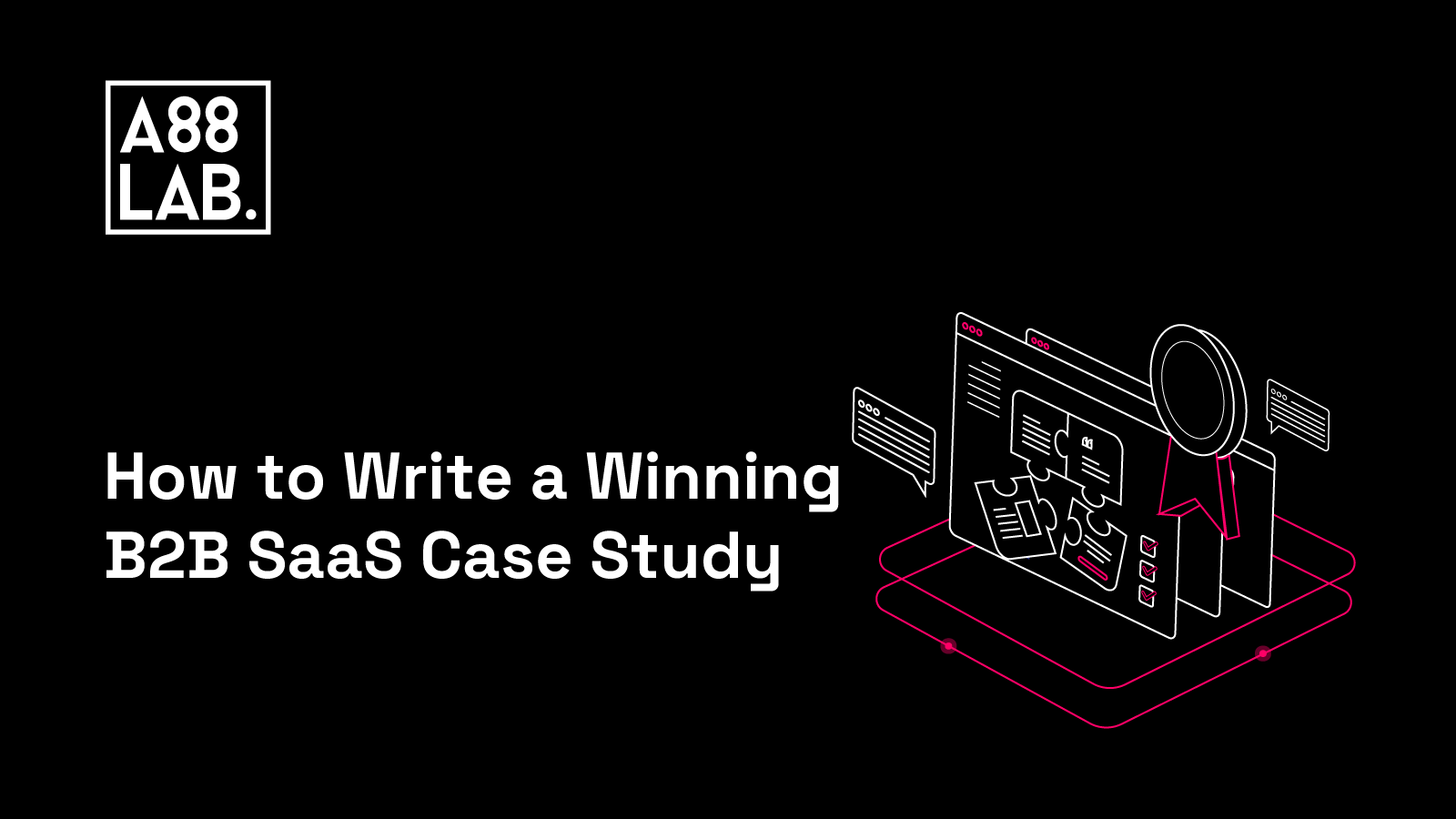In 2011, Marc Andreessen said, “Software will eat the world.” Thirteen years later, this is exactly what happened. Nowadays, for almost every industry, there is software that delivers some type of online service.
As a result of this exponential growth of the SaaS industry, the SaaS market has become more and more competitive. If you don’t want your SaaS to end up in the bottom quartile of your peers, implementing a go-to-market strategy and measuring its success has become a necessity.
Go-to-market metrics are pieces of data that help your product marketers track the success of your go-to-market strategy or, more specifically, the success of your product journey. GTM metrics are more than just numbers; they are valuable insights that reveal customer interactions, patterns, and preferences, allowing you to make a diagnosis on how well you’re attracting, converting, and retaining customers - and fix potential problems if you spot a bottleneck.
So, to help you out with your go-to-market strategy, here are 9 essential go-to-market metrics that every SaaS company should keep an eye on:
1. New User Growth Rate
The new user growth rate represents the percentage of new users you gain every month who have subscribed to your SaaS product. Tracking this metric over a specific period of time will give you insight if your user base is increasing or decreasing. It also allows you to identify trends and patterns to see when the user experience peaks and when it troughs
Monitoring the new user growth metric will determine how effective your overall GTM strategy is in attracting new customers and will help you make informed product marketing decisions during your product releases.
To calculate the new user growth rate, start by subtracting the number of lost users from the number of new users at the end of a period. Then, divide that number by the total number of users. Finally, multiply the result by 100 to get your new user growth rate in percentage.
.png?width=1600&height=900&name=Pipeline%20Velocity%20Formula%20for%20B2B%20SaaS%20(10).png)
2. Customer Acquisition Cost (CAC)
Customer Acquisition Cost, or CAC, is the average amount of money your marketing and sales team spend to acquire new customers. By tracking this metric, you understand how much you can afford to spend on your acquisition channels without your bottom line taking a negative hit and how many customers you’re generating from your investments—making it a metric that’s closely tied to profitability.
To calculate customer acquisition cost (CAC), divide your total marketing and sales costs by the number of new customers acquired during a specific time period. For example, if a company spends $200,000 on marketing and sales expenses in a year and acquires 2000 new customers during that year, the customer acquisition cost will be $200 per customer.
.png?width=1600&height=900&name=Pipeline%20Velocity%20Formula%20for%20B2B%20SaaS%20(11).png)
For tracking this metric, you can also use various tools, such as marketing automation, CRM, or financial management software. Using these tools over a period of time will allow you to compare your CAC to industry benchmarks.
Here are a few more B2B SaaS CAC benchmarks broken down by industry and target market, according to a report by FirstPageSage:
.png?width=1600&height=900&name=Pipeline%20Velocity%20Formula%20for%20B2B%20SaaS%20(12).png)
3. Pipeline Velocity Rate
The end goal of any go-to-market strategy is to sell the product. The smoother your sale process is, the easier for you to sell your product. This is why pipeline velocity, also known as sales velocity, is one of the most important go-to-market metrics. It’s a metric that your go-to-marketers use to see how fast opportunities move through the different stages of your pipeline and if they are facing any hurdles at any stage.
By analyzing your pipeline velocity, you gain a better picture of the overall performance of your sales team, and you can easily identify if there are any areas of your sales process that need improvement.
When calculating pipeline velocity, there are four metrics you need to keep in mind. Those metrics are:
- Number of Opportunities
- Win/Conversion Rate
- Deal Value (average deal size)
- Length of Sales Cycle (measured in months)
To calculate pipeline velocity, multiply the number of qualified opportunities in your pipeline with the win rate and the average deal size, then, divide that number by the average time it takes for a sale to close. Having high velocity means your leads face few or no hurdles in the onboarding process, which encourages them to convert faster.
.png?width=1600&height=900&name=Pipeline%20Velocity%20Formula%20for%20B2B%20SaaS%20(13).png)
4. Customer Lifetime Value (LTV)
Customer Lifetime Value (LTV) is basically an estimate of the total revenue you can expect from a single customer over the course of their engagement with your product or service. It helps forecast the long-term profitability of your sales and marketing efforts, allowing you to iterate your strategy to maximize the longevity and profitability of customer relationships.
When Calculating LTV, you first need to figure out the average purchase value of your product or service, then multiply it by the average number of purchases a customer makes annually. This will give you the customer value per year. After multiplying this figure by the average lifespan of a customer, the customer's lifetime value is determined.
To make it even more helpful, you can also calculate the LTV/CAC and measure the real long-term profitability of acquiring customers. All you need to do is divide your average LTV by CAC. The higher the ratio, the more profitable your GTM strategy is.
.png?width=1600&height=900&name=Pipeline%20Velocity%20Formula%20for%20B2B%20SaaS%20(18).png)
5. Net Promoter Score (NPS)
One way to measure how happy your customers are with your product or service is by measuring the Net Promoter Score (NPS). NPS is a metric that measures customer loyalty and provides great insight into how your business is doing in the market. It’s also an indicator that measures the likelihood of your customers recommending your product to others.
There is only one way to calculate your NPS. You go and ask your customers, “On a scale of 0-10, how likely are you to recommend our product/service to others?”
The responses you’ll get can be segmented into three groups:
- Promoters (score 9-10). Loyal supporters who are satisfied with you and are likely to refer others to your product, boosting positive word of mouth.
- Passives (score 7-8). Users who are satisfied with your product but are still vulnerable to competitors’ offers and are unlikely to recommend you to others.
- Detractors (score 0-6). Unhappy clients who are likely to leave negative reviews or word of mouth.
The final NPS is calculated by subtracting the percentage of detractors from the percentage of promoters. For example, if you have 70% promoters, 20% passives, and 10% detractors, your NPS score would be 50 (70%-20%=50%).
Understanding and improving your NPS score will help you build a better customer experience by capturing feedback and taking the necessary steps to create a customer-centric business.
6. Net Revenue Retention (NRR)
Net Revenue Retention shows how many products or services is your average customer willing to pay for. It’s a metric that provides a comprehensive view of both customer value and revenue stability. Traditional revenue metrics, such as Annual Recurring Revenue (ARR) or Monthly Recurring Revenue (MRR), focus solely on new sales and recurring revenue. On the opposite side, NRR takes into account not just the retained revenue but also the additional expansion revenue generated from existing customers through upsell, cross-sell, or upgrades.
Solid NRR shows that the GTM strategy is effectively resonating with the target audience, and RevOps is successfully ensuring revenue stability. In contrast, a suboptimal NRR requires a re-evaluation of both GTM strategies and RevOps processes.
To properly calculate NRR, start by adding the starting MRR to the expansion MRR, subtract the churned MRR from that number, and then divide that number by the starting MRR.
A Net Revenue Retention rate of over 100% is considered excellent, as it indicates that the business is not only retaining its existing customer base but also expanding the value of those relationships.
.png?width=730&height=411&name=Pipeline%20Velocity%20Formula%20for%20B2B%20SaaS%20(21).png)
7. Average Transaction Value (ATV)
Average Transactional Value shows how much your customers are willing to pay for your product. By keeping an eye on ATV, you can figure out what factors influence customer spending over time. When combined with other metrics such as CAC or lifetime value, ATV helps you make informed decisions about your pricing strategy.
If AVT is too low, it may mean that the price of your SaaS product is too high, which is a sign adjustments are needed to align better with the customer expectations. On the flip side, if the AVT is too high, the price may be too steep for the target audience. This means that a reevaluation is necessary to ensure competitiveness and sustainable growth. So, ATV is like a compass that guides SaaS companies toward optimal pricing and better market positioning strategies.
To calculate the AVT, collect the total number of transactions, then divide that number by the total revenue.
.png?width=730&height=411&name=Pipeline%20Velocity%20Formula%20for%20B2B%20SaaS%20(20).png)
8. Return on Ad Spend (ROAS)
Return on as spend (ROAS) provides a clear picture of the effectiveness of your ad campaigns, allowing you to optimize your marketing spend and focus on channels that generate the highest returns. By tracking ROAS, you can identify which ads are generating the most revenue and in which ads you should invest for maximum impact.
Measuring ROAS is a straightforward process. Simply divide the revenue generated from a specific paid ad campaign by the total amount spent on that campaign. However, tracking ROAS oftentimes requires having a robust tracking system in place to correctly attribute revenue to the specific campaign.
If the ROAS result is more than 1, it means you’re gaining more than you’re spending. If it’s less than 1, it means the ad campaign is costing more than it’s bringing in.
.png?width=1600&height=900&name=Pipeline%20Velocity%20Formula%20for%20B2B%20SaaS%20(17).png)
9. Time to Value (TTV)
Time to value, or TTV, is a critical metric that measures the amount of time it takes your new customers to get value from your product or service. New users expect to receive the value they have paid for in a timely manner—the quicker, the better.
A shorter time to value is generally wanted as it indicates that customers can start realizing the benefits of your SaaS product or service quickly after the acquisition, which can lead to higher customer satisfaction, retention, and, ultimately, increased revenue.
Measuring time to value involves understanding the entire customer journey, from the moment they become aware of the product to the point where they achieve the desired outcome. Analyzing this metric can help businesses identify areas for improvement in their onboarding processes, product design, user experience, and overall customer satisfaction.
To calculate TTV, subtract the start time, which represents the point at which the customer first interacts with the product, from the end time, which represents the point at which a customer starts receiving value from the product or service, and then divide this result with a total number of customers.
Conclusion
Keeping an eye on these SaaS GTM metrics early on will help you build the right foundations for sustainable growth. These metrics serve to help businesses understand the efficiency of their go-to-market strategy and identify if there are any areas that need improvement.
Tracking these metrics will help you find ways to improve your overall go-to-market strategy, keep your customers from leaving, and make sure they have a great experience with your product so you can grow your business in a sustainable way.
.png)


